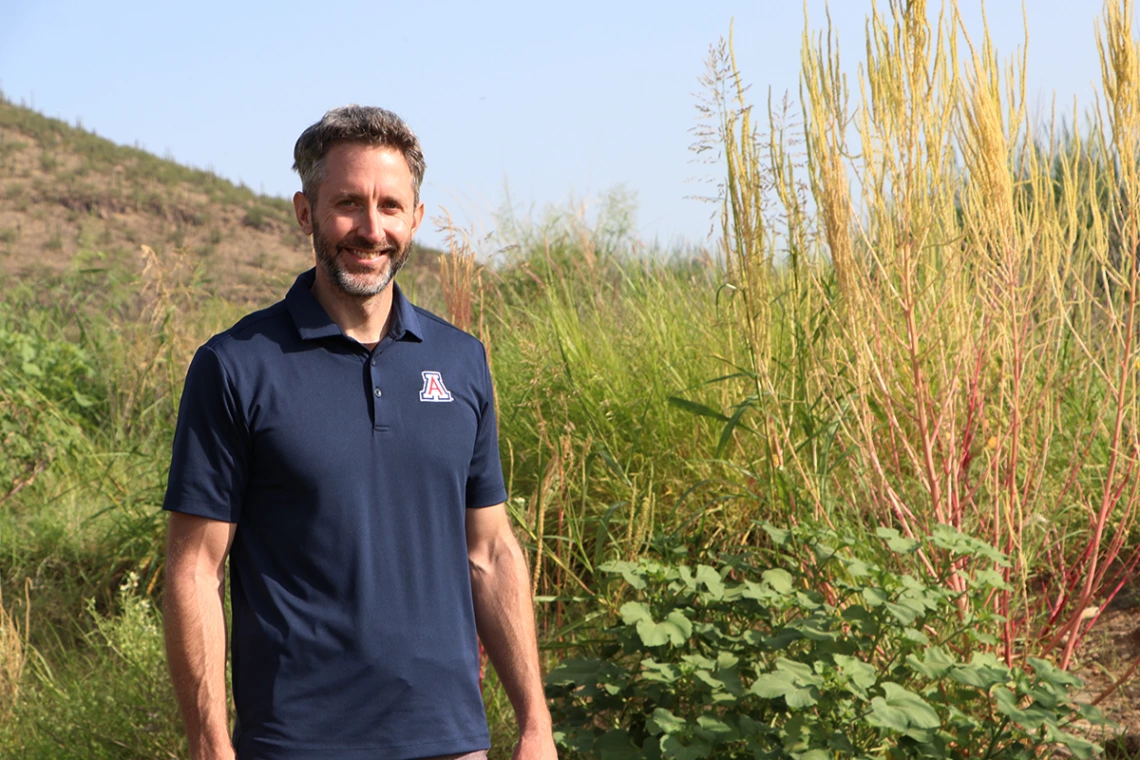Just add water: Returning biodiversity to urban environments

Michael Bogan
Rosemary Brandt
Throughout the late 19th century, rivers across the southwestern United States were parceled out, and flows were diverted through irrigation canals and tamed behind dams. Growing populations put new demands on groundwater sources. Coupled with changing climate conditions, water tables sank and perennial desert streams began to run dry.
The fate of the Santa Cruz River in southeastern Arizona was no different but nearly 70 years after the historic downtown reach of the Santa Cruz River ran dry, water returned in the form of 2.8 million gallons of reclaimed water released daily through the city of Tucson's Santa Cruz River Heritage Project.
When the water valves opened, researchers from the School of Natural Resources and the Environment were there to witness the occasion. Their driving question: Would aquatic biodiversity return?
"Within the first day, we saw seven different species of dragonflies," said Michael Bogan, an aquatic ecologist and associate professor of natural resources.
After 10 months, the team found over 40 species. A natural marshland sprang back to life, bringing plants, insects, reptiles, fish, birds, and people back to the river.
Bogan and his team of graduate students continue to monitor the renewed ecosystem, using it as an open-air classroom for teachers from metro Tucson and Tohono O’odham and Pascua Yaqui nations to learn from current research and develop hands-on science curriculum for area schools.
As an early and lead investor in this effort, Polly Weber has enabled Bogan to build his team’s capacity to understand and conserve this ecosystem. For example, Weber has helped Bogan recruit and train multiple graduate students from the U.S. and Mexico, and her gifts have ensured these students have the equipment they need to do their jobs, such as camera traps to monitor bobcats and javelina moving through the wash, or transmitters for tracking elusive Sonoran mud turtles. Weber has also helped Bogan create an outreach and engagement position who is dedicated to involving the broader community in the work of conserving the Santa Cruz watershed.
“I was moved to support Dr. Bogan’s outreach programs for local youth, he’s teaching them that they can make a big difference in safeguarding their environment and empowers these kids in a fun and meaningful way,” Weber said.
